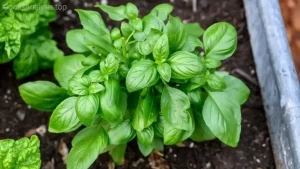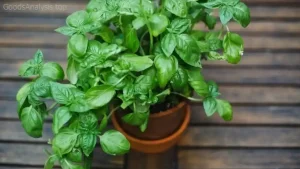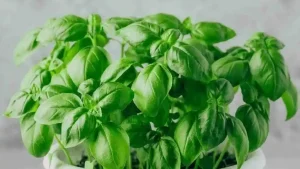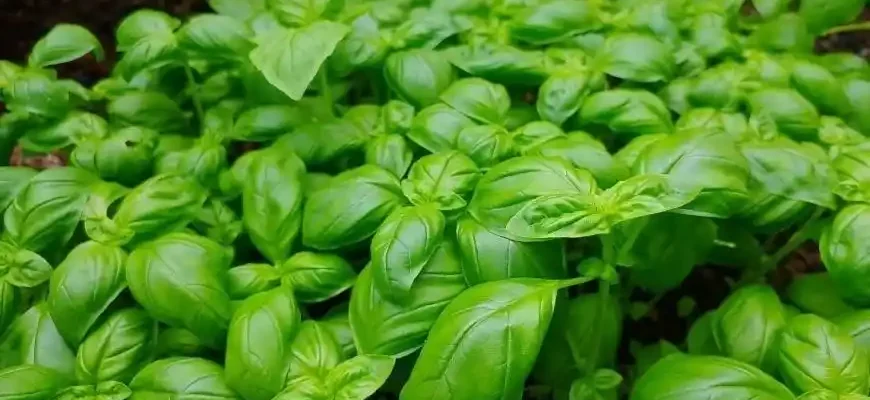Growing basil indoors is an incredibly rewarding experience, whether you’re a seasoned gardener or a beginner looking to bring a little greenery into your home. Not only does it add freshness to your cooking, but it can also improve your home’s air quality and offer a calming green touch to your space. If you’ve always wanted to grow your own basil at home, but weren’t sure where to start, you’re in the right place. Here’s a comprehensive, step-by-step guide to help you grow this aromatic herb successfully indoors. Along the way, we’ll also explore the common pitfalls to avoid, and practical solutions to help you along the way.
Why Grow Basil Indoors?
Before we get into the nitty-gritty of basil care, let’s first touch on why growing basil indoors can be such a great choice.
- Convenience: Fresh basil is just a snip away. Whether you’re preparing a pasta dish, pizza, or a salad, having basil within arm’s reach is incredibly convenient.
- Air Quality: Like many houseplants, basil helps purify the air, absorbing toxins and releasing oxygen. It’s a two-in-one—decorative and functional.
- Herbal Benefits: Basil isn’t just a culinary herb; it has been used in traditional medicine for centuries. It’s rich in antioxidants and essential oils that can aid digestion, reduce inflammation, and boost immunity.
- Year-Round Harvesting: Growing basil indoors allows you to enjoy fresh basil throughout the year, no matter the season.
Ideal Conditions for Indoor Basil Growth
Growing basil indoors requires the right conditions. Let’s break it down:
1. Lighting: The Most Critical Factor
Basil is a sun-loving herb, and it thrives under strong, direct sunlight. Indoors, this can be tricky if you don’t have a south-facing window. Ideally, basil needs 6 to 8 hours of sunlight per day. If your windows don’t offer enough natural light, consider using a grow light. LED grow lights are an excellent option because they’re energy-efficient and mimic the sunlight spectrum that basil needs to thrive.
Tip: Place your basil near a bright window, preferably one that faces south or west. If that’s not possible, consider rotating your pots to ensure all sides of the plant get enough light.
2. Temperature
Basil loves warmth, so keep it in a spot where temperatures range between 65°F and 75°F (18°C-24°C). Too much fluctuation in temperature can cause the plant to stress, and stress equals a sad basil plant. Avoid placing it near drafty windows or in rooms with air conditioning that fluctuates in temperature.

3. Soil
Basil grows best in well-drained, nutrient-rich soil. A good quality potting mix will work well, but make sure it’s light and not too heavy, as basil doesn’t like soggy roots. You can enhance the soil with a bit of perlite or vermiculite to ensure drainage.
4. Container
Basil doesn’t like being in a cramped space, so it’s important to give it room to grow. Choose a container that’s at least 6 inches deep and has proper drainage holes to prevent root rot.
How to Plant and Care for Indoor Basil
Now that we’ve covered the basics, let’s get into the practical steps:
Step 1: Start from Seeds or Cuttings
You can either start your basil from seeds or cuttings. Seeds will take a little longer, but both options are easy.
- Seeds: If starting from seed, sow them about 1/4 inch deep into your potting mix and water them lightly. Place the pot in a warm, bright spot and wait for them to germinate, which typically takes about 7-10 days.
- Cuttings: If you already have a basil plant, you can propagate it by cutting a healthy stem about 4-6 inches long, removing the lower leaves, and placing the cutting in water. After a few days, you’ll see roots forming, and once they’re established, you can transfer the cutting to soil.
Step 2: Watering
Basil prefers slightly moist soil but hates sitting in water. The key is to water when the top inch of soil feels dry. Ensure the water drains out the bottom of the pot to prevent root rot.

Tip: Use a watering can with a long spout to water the plant gently. Basil doesn’t like its leaves to get too wet.
Step 3: Pruning
As your basil grows, prune it regularly to encourage bushy growth. Pinch off the top set of leaves, cutting just above the node where two leaves meet. This helps the plant grow more vigorously and prevents it from becoming leggy.
Important Note: If basil flowers, it will stop producing the flavorful leaves you want. Pinch off any flower buds as soon as you see them to ensure your plant remains productive.
Step 4: Fertilizing
Basil is a light feeder, so fertilizing is necessary but shouldn’t be overdone. Use a balanced, water-soluble fertilizer once every 4-6 weeks to keep your plant healthy and productive.
Common Challenges and How to Overcome Them
No plant care is without its challenges. While basil is relatively easy to grow, here are some common issues and how to solve them:
- Yellowing Leaves: This can be caused by overwatering, underwatering, or nutrient deficiencies. Make sure you’re watering properly and using a well-draining potting mix.
- Leggy Growth: If your basil plant is stretching towards the light, it may not be getting enough sunlight. Try moving it to a brighter location or supplementing with a grow light.
- Pests: Basil is prone to aphids, spider mites, and whiteflies, especially if kept near other plants. Keep an eye out for tiny bugs and treat infestations promptly with an organic insecticidal soap.
- Root Rot: This happens when the roots sit in water for too long. Make sure your container has proper drainage, and never let the plant sit in water for extended periods.
Harvesting and Using Basil

When your basil plant reaches a good size (around 6 inches tall), you can start harvesting leaves. Simply pinch off the leaves as needed, but don’t remove more than a third of the plant at any given time. This will keep the plant healthy and productive.
You can use fresh basil in a wide variety of dishes, from pesto and pasta to salads and garnishes. If you end up with a lot of basil, consider freezing the leaves in olive oil for easy use in the future, or drying them to preserve their flavor.
Real Opinions from Basil Growers Around the World
- Emma, 32, USA:
“I’ve been growing basil indoors for about a year now, and it’s one of the most rewarding experiences. I started with seeds, and though it took a bit of time, the payoff has been incredible. Fresh basil in my dishes all year long? Absolutely worth it!” - Carlos, 45, Spain:
“I started growing basil in my kitchen window. It’s a beautiful, green plant that has saved me so much money on herbs. I think the most important thing is giving it enough sunlight and making sure it doesn’t get too cold in the winter. It’s pretty low-maintenance once you get the hang of it.” - Amina, 54, Kenya:
“Here in Nairobi, we have lots of sunshine, so basil grows like a dream. However, we don’t always have enough space, so I grow mine in smaller pots. Basil’s fragrance fills the house, and I love it. It’s also a great remedy for headaches, so I keep a pot on my kitchen counter.” - Jiro, 60, Japan:
“I’ve been growing basil in my apartment for several years. I use a grow light during the winter months when there’s not enough sun. I find it really calming to care for my plants, and having fresh basil all the time is a huge bonus for my cooking.” - Zara, 29, UK:
“I don’t have a green thumb, but basil is one of the easiest herbs to grow indoors. It’s hardy and doesn’t require too much fuss. I’ve used it in everything from sandwiches to soups, and it always adds such a vibrant touch to my meals.”
Final Thoughts
Growing basil indoors is one of the easiest ways to enjoy fresh, flavorful herbs all year long. With the right care—plenty of sunlight, well-draining soil, and regular pruning—you can enjoy your own indoor herb garden, even if you have limited space. Just remember that, like any plant, basil requires attention, but the effort is definitely worth it. You’ll be rewarded with fragrant, delicious basil leaves that will enhance your culinary creations and bring a bit of green joy into your home.
Happy growing!









